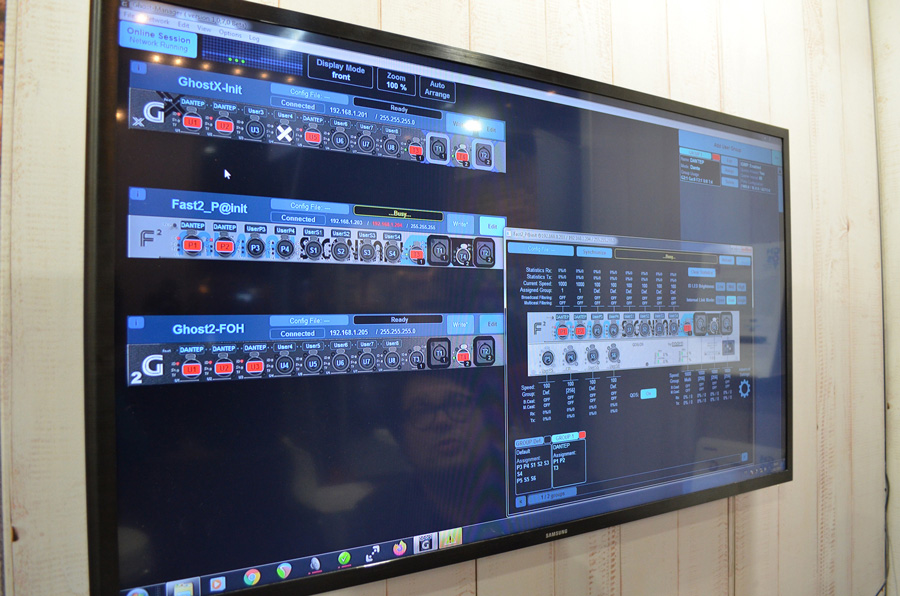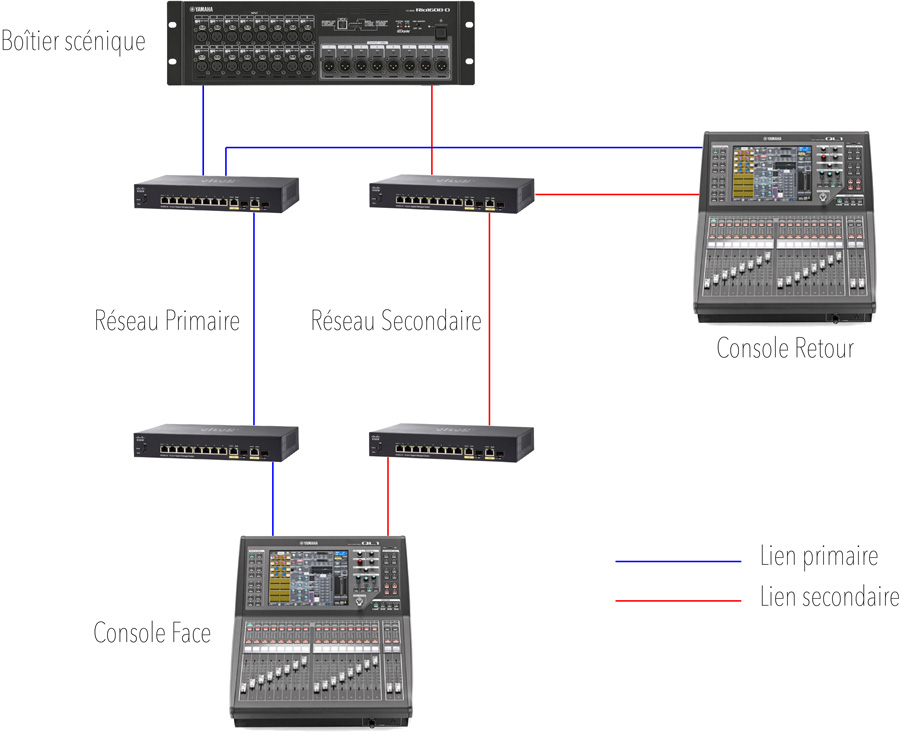At ISE 2020, Agora audio, designer of the Ghost audiovisual Ethernet switches (Gigabit Host), unveiled the beta version of its Ghost Manager software. The software comes with an intuitive interface, and allows users to configure and monitor Ghost switches in a simple and graphical way.

Ghost manager offers offline and online modes, which means you can prepare your configuration in advance, without the need to be physically connected to the switches. Once the configuration files have been created via the Ghost manager software (offline), the user will be able to load the files into the switches and to monitor the devices to check the health of the network, or to apply modifications (online).
Ghost switches are meant to create converged audiovisual networks: long story short, they enable the transport of audio, video and lighting data on the same network. However, some of these protocols use a transmission method called Multicast: the end points (console, node, stage box, amplifier …) will request the flow they wish to receive (or subscribe to).

These Multicast streams can be sent to multiple destinations at the same time, allowing the same frame to be used for all destinations, reducing the number of frames sent by the source and the network traffic.
For this mechanism to work properly, the switches must support a feature called IGMP Snooping. When this feature is activated, the switches act as air traffic controller, and direct the Multicast flows to the destinations who subscribed to these flows.
This feature was sorely lacking in Ghost switches, but here comes the good news: the latest version of the software fixes this problem. This new release also brings the support for DECT timing, sometimes used in some time sensitive intercom application.
Fast series
In addition to IGMP snooping, Ghost Manager 1.0.7.5 includes support for the Ethernet switch Fast series. For those unfamiliar with this series, the Fast switches have been designed to create primary/secondary networks in a matter of minutes. Primary/secondary networks are very popular in audio and video over IP application, Dante protocol being one of the most representative solution. Many Dante devices offer two Ethernet ports, a primary port and a secondary port.
This system makes it possible to create redundancy at link level, by sending the same data on the primary and secondary networks, in a completely synchronized manner. The result? in the event of a link loss on the primary network, or if one of the primary switches fails, communication will seamlessly continue though the secondary network. To do this, the user will have to use two switches at control room, and ideally two switches on the stage.

This is where the Ethernet Fast switch series comes into play: The devices have two separate switch PCB (Printed Circuit Board), thus providing PCB redundancy. If the primary PCB of the Fast switch fails, the secondary PCB takes over automatically. The major advantage of this system is that it requires one physical device only, providing the same level of redundancy as two physical switches, but occupying one rack unit only.

This new release of the Ghost Manager software is now available for download on the support page of Ghost Network website







